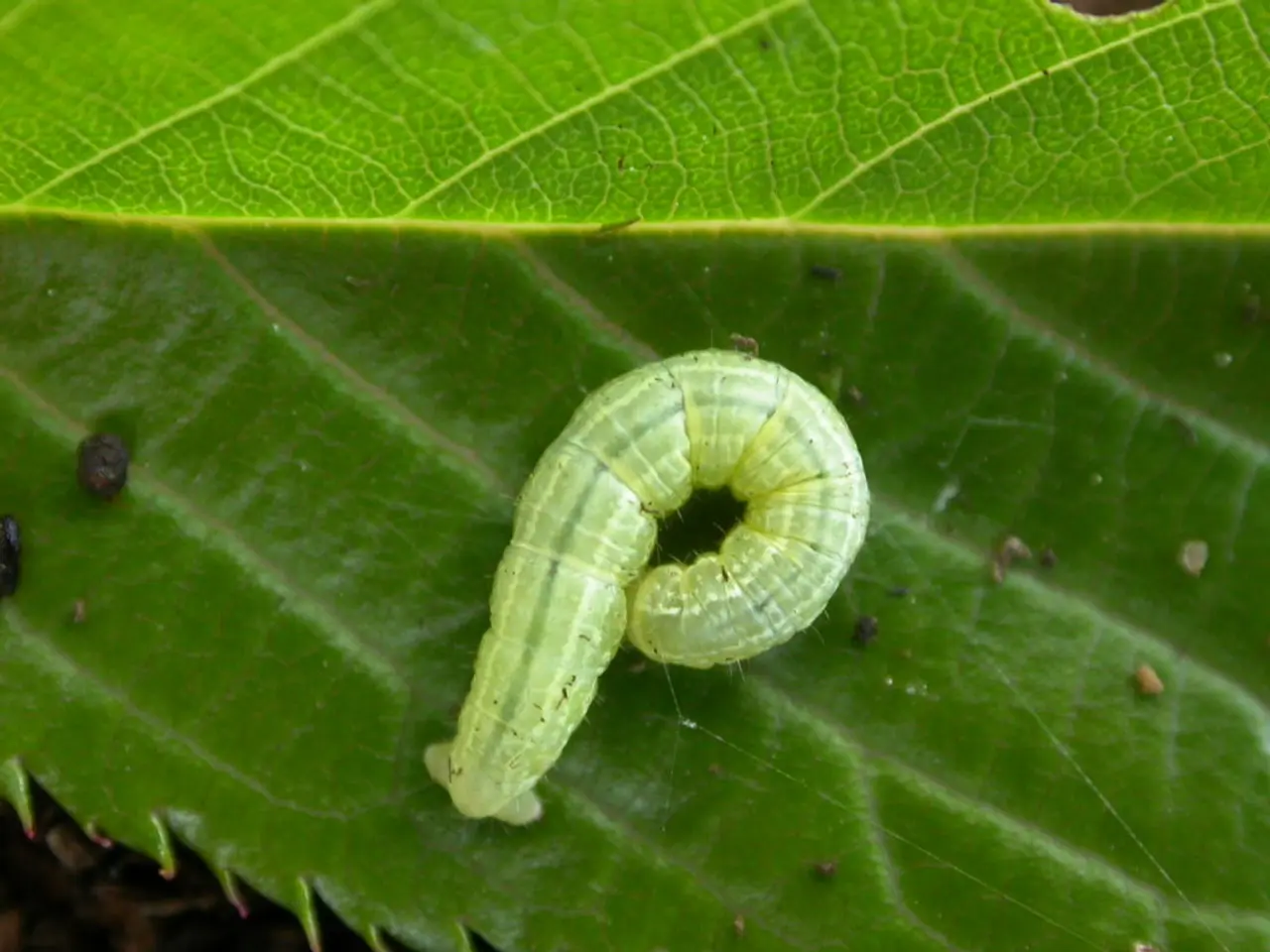Human Parasites: Classification of Worms, Infections, and their Sources
In the world of microscopic organisms, parasites can pose a significant threat to human health. These unwelcome guests can cause a range of diseases, from mild discomfort to severe infections. Here's a look at some common parasitic infections found in the United States.
Demodex folliculorum, tiny mites that dwell in and around hair follicles, can infest the eyelashes or eyebrows, potentially leading to a variety of ocular diseases. On the other hand, hookworms, which lay eggs in the soil, can penetrate human skin, causing infection.
Scabies, a condition caused by mites burrowing into the skin, is highly contagious and can result in severe itching and rashes. Lice, parasitic insects that live off human blood, come in three types: body lice, head lice, and pubic lice. These pests can cause discomfort and embarrassment, but with proper treatment, they are easily manageable.
Bedbugs, another ectoparasite, live on clothing and bedding. Their bites can lead to itchy skin discoloration and swelling. Ectoparasites, such as fleas, lice, and bedbugs, are common parasites that live on the outside of the body.
When it comes to parasitic infections in the United States, there are several noteworthy examples. Protozoal infections, such as Cyclosporiasis caused by Cyclospora cayetanensis, are common. Outbreaks of this infection are reported mainly in spring and summer months and are associated with ingestion of contaminated food or water, causing gastrointestinal symptoms.
Helminth infections, although less prevalent in the U.S. than in developing countries, do occur. Ascariasis, caused by the roundworm Ascaris lumbricoides, can infect humans via ingestion of eggs from contaminated soil or food, leading to symptoms such as abdominal pain and intestinal obstruction. Echinococcosis, caused by larval stages of Echinococcus tapeworms, is rare but present in parts of North America, involving cyst formation in organs like the liver and lungs.
Ectoparasites predominantly affect animals but can occasionally impact humans. Common ectoparasites infecting reptiles in the U.S. include snake mites and ticks. Although these parasites are more relevant to animals than humans, they can cause skin irritation and secondary infections.
Toxocariasis, a roundworm infection that affects the eyes, brain, and liver, is common among people in the U.S. Whipworms, which live in the large intestine and lay eggs, can infect humans when ingested, often on unwashed fruit or vegetables.
Whipworms, ringworm (a fungal infection, not a worm), screwworms (fly larvae that burrow into the skin), and many other helminths, such as Echinococcus tapeworm, Diphyllobothrium latum tapeworm, anisakiasis, raccoon roundworm, clonorchiasis, dioctophymosis, Guinea worm, hymenolepiasis, Enterobiasis pinworm, Fasciolosis liver fluke, Fasciolopsiasis intestinal fluke, gnathostomiasis, Loa loa filariasis, mansonellosis, river blindness, lung fluke, schistosomiasis, bilharzia, or snail fever, sparganosis, strongyloidiasis, trichinosis, are all examples of parasites that can affect humans.
People may also ingest beef or pork tapeworms and develop taeniasis, which can lead to cysticercosis. Elephantiasis lymphatic filariasis, which affects the lymph system, can cause lymphedema and elephantiasis, leading to swelling and enlargement of the arms and legs.
In summary, while the key protozoal parasite causing human disease in the U.S. is Cyclospora, helminthic infections such as ascariasis and echinococcosis occur but are less common. Ectoparasites predominantly affect animals but can occasionally impact humans, causing skin irritation and secondary infections. It's essential to practise good hygiene and be aware of the potential risks associated with parasitic infections to maintain good health.
References:
- CDC, Surveillance of Cyclosporiasis, 2025.
- Wikipedia, Neglected tropical diseases (Echinococcosis), 2025.
- Merck Veterinary Manual, Parasitic Diseases of Reptiles, 2025.
- Mayo Clinic, Ascariasis, 2025.
- Mayo Clinic, Toxocariasis, 2025.
- Mayo Clinic, Whipworm infection, 2025.
- CDC, Parasites - Giardia, 2025.
- CDC, Parasites - Toxoplasma, 2025.
- CDC, Parasites - Trichinellosis, 2025.
- CDC, Parasites - Taeniasis/Cysticercosis, 2025.
- CDC, Parasites - Elephantiasis, 2025.
- Depression, a common mental health disorder, can sometimes be linked to chronic diseases such as COPD, diabetes, and obesity.
- In the realm of medical-conditions, macular degeneration, a type of eye disease, is associated with aging and can lead to vision loss.
- Dry eye, another eye condition, is often a result of insufficient tear production or imbalance in the tears, causing discomfort and vision problems.
- Bipolar, a mental disorder characterized by extreme mood swings, can be managed with a combination of medication, psychotherapy, and lifestyle changes.
- Ulcerative colitis, a type of inflammatory bowel disease, can cause symptoms such as abdominal pain, diarrhea, and fatigue.
- The science of predictive analysis has begun to explore the relationship between digital patterns, such as AQ readings, and health-and-wellness factors, including stress and sleep quality.
- Lice, parasitic insects that live off human blood, can also infest pets, contributing to the spread of these pests.
- Psoriasis, a skin condition marked by red, scaly patches, can cause discomfort and affect a person's self-esteem.
- Migraines, a type of headache, are often accompanied by nausea, sensitivity to light and sound, and can significantly impact a person's quality of life.
- In addition to parasitic infections, conditions like NSCLC, a type of lung cancer, require early detection and appropriate treatment for effective management.




